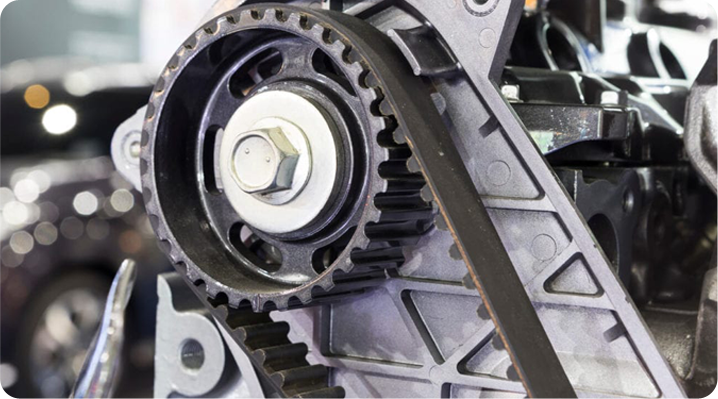Timing belts
All ICE based vehicles have an accessory belt which drives various other parts like the air-conditioning compressor and alternator, and maybe the power steering and water pump. This belt is typically mounted externally so one can see it on the front end of the engine, and it usually is a long belt that goes over various pulleys. This belt synchronizes or orchestrates the speeds at which all the parts it is connected to and needs to be checked or replaced when it shows wear and tear.
Timing belts
The rubber timing belts wear out or break over time and can affect the working of your car’s engine. It can even cause complete engine failure, so you need to replace them as recommended by your manufacturer.
To avoid serious repairs such as broken valves, damage to cylinder heads, walls, and pistons, your car timing belts needs a replacement every 60,000 to 90,000 kms. The replacement process can be costly and time taking. However, it can save you from engine shutdown when you are on the road.

Our technicians at Grandview Tire & Auto will proceed based on your manufacturer’s recommended service interval, as it is necessary to replace them before they break. We examine the type of engine (interference or non-interference), install new timing belts along with idler pulleys and belt tensioners. We even test the vehicle to ensure its normal operation.
We advise you to visit our service center once your car has reached the recommended service interval to avoid getting stranded in the middle of the road.
